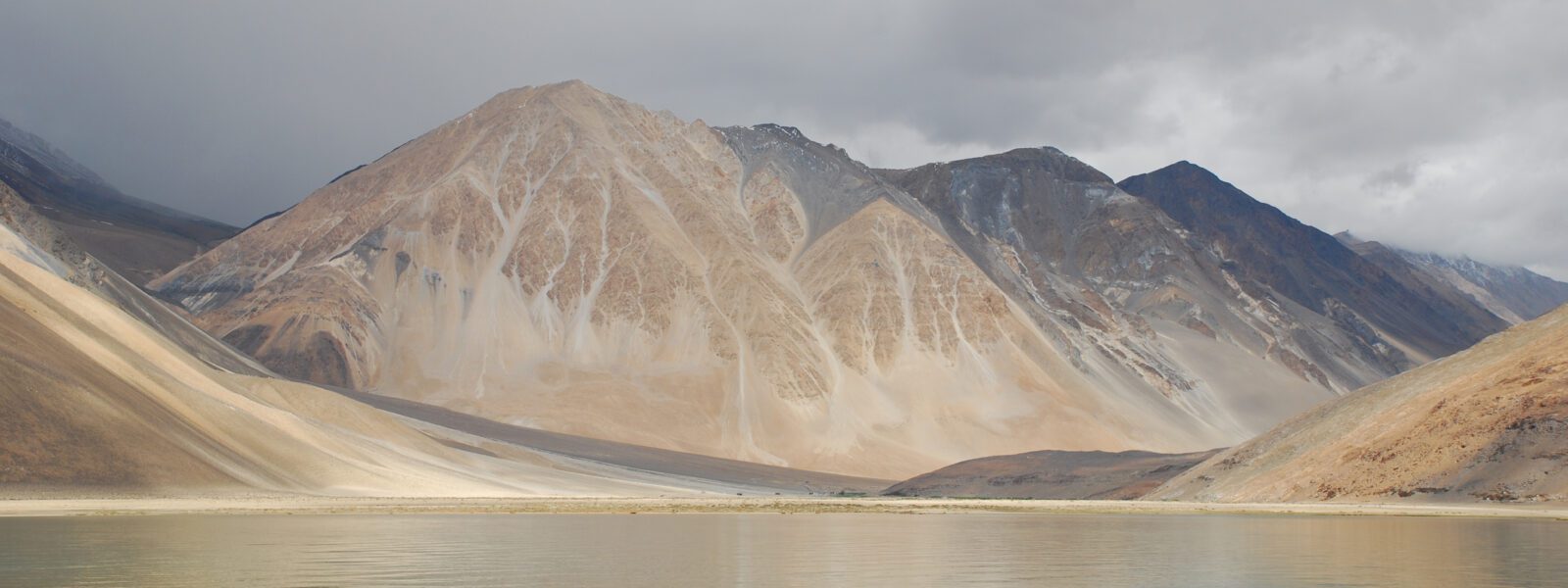Listening to What the Altitude Remembers — When the Earth Measures Itself Ladakh
By Elena Marlowe
The journey to Ladakh truly begins when the earth measures itself ladakh, inviting you to listen and feel the altitude’s whispers.
Prelude — The Thin Edge of Breath
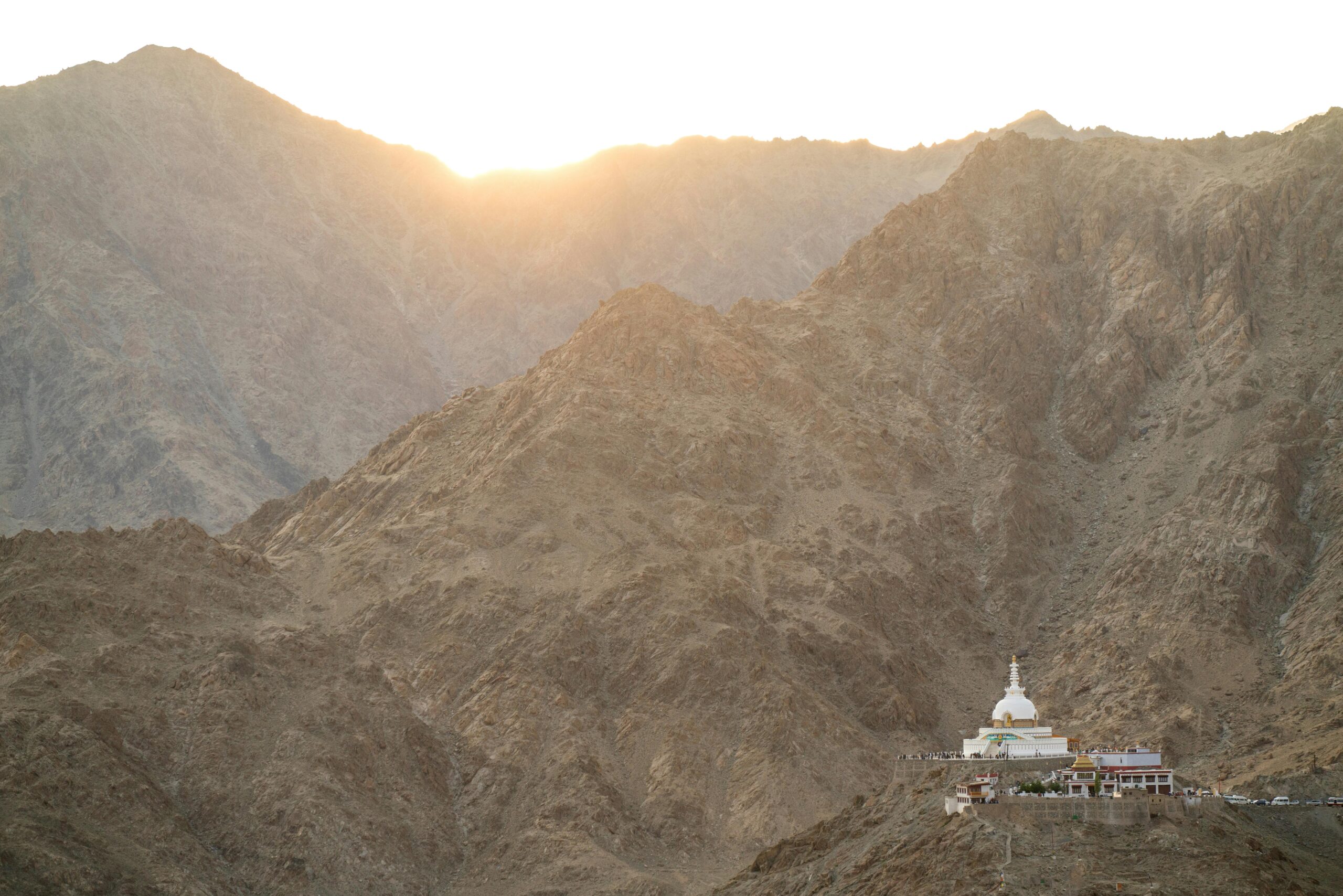
The first mile of sky: how a journey begins in the lungs
The first recognition of Ladakh arrives without fanfare—an intake of air that feels like a punctuation mark. At the airport, at the little guesthouse window, on the first slow climb out of town, your lungs register an alteration and your body, in its quiet bureaucratic fashion, begins to negotiate. That negotiation is the beginning of the story. It is not measured in signposts or maps but in breath counts, pauses, and the subtle arithmetic of how many steps per steady inhale. The thin air does not shout; it whispers corrections. You begin to move with a gentleness that would have felt suspicious in lower regions: you walk like someone who has learned the etiquette of waiting. There is a new vocabulary of small acts—sipping water, resting without shame, choosing a warm sweater even in a bright sun—which together form the grammar of survival. This grammar is not merely practical; it is ethical. To travel in such places demands that one adopt a policy of modesty toward the land, an agreement to not extract more than is offered. The lungs are not merely organs here; they are meters. They measure not only oxygen but rhythm, patience, and the capacity for attention.
In those first hours and days, the oximeter becomes a kind of translator, and journaling, once a pastime, becomes an instrument of calibration. I record more than scenery: I note how the air tastes at different altitudes, how my hands feel after a day under the maximal sun, how the sound of a pot lid on a stove seems sharper, more insistent. The body, placed under new conditions, re-teaches itself language. This process of relearning is a travel lesson more substantial than any postcard image. Each inhalation is a sentence in a new dialect; each pause a paragraph revealing how the planet is organizing its invisible resources. To treat Ladakh as an object to be consumed is to miss that invitation: the territory invites a becoming—quiet, attentive, slow—that rewards with a clarity no guidebook can promise.
I. The Body as a Barometer
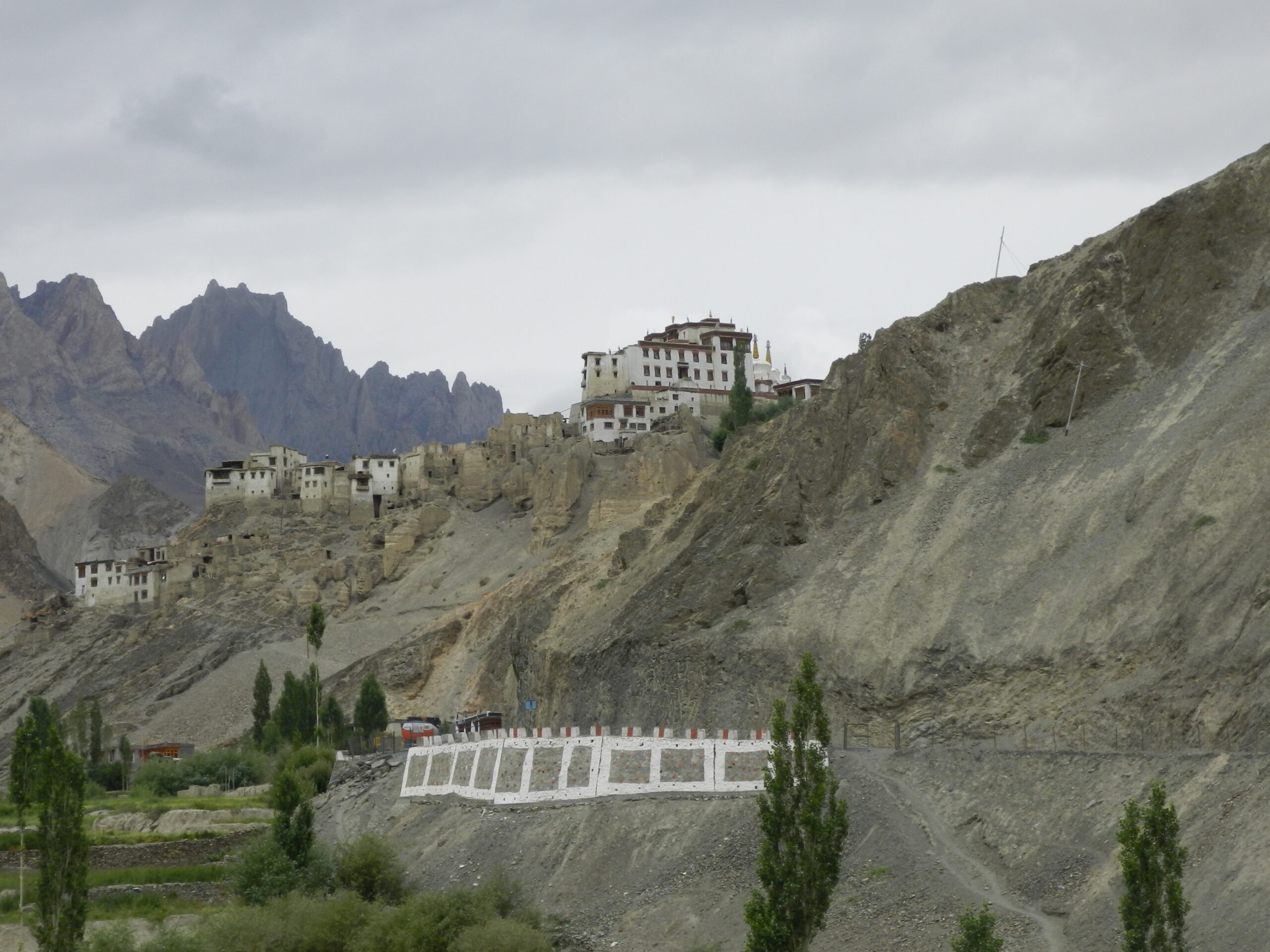
Breath, pulse, and the arithmetic of survival
When you live with altitude as a companion, the body transforms from a private interior into a public instrument. There is an almost musical quality to the way breath rearranges itself: rhythms lengthen, a tendency toward economy takes hold, and even the idea of exertion adopts the conservative tone of a ledger. The measures that matter are small—how many steps between rests, how long to stand and simply let the air settle in the chest—but they add up into a new accounting of movement. This accounting is not about triumph; it is about stewardship. Every guest in Ladakh learns quickly that there is no glory in forcing the pace. The mountain’s patient scale cannot be hurried; instead it asks for negotiated assent. My oximeter’s numbers become a conversation, not a verdict; if the reading dips, I do not view it as failure but as information, a map to be used. Hydration becomes ritual, food a calibration of energy, and sleep a repair shop where the day’s miscalculations are adjusted.
There is also the quiet intelligence of listening to others who are native to the region—how their steps have long been tempered by this air, how their laughter is measured by a different currency. To witness a shepherd resting mid-hill or an elder speaking slowly in a courtyard is to observe a culture of optimization that is unshowy and effective. The visitor who learns from these local rhythms finds that survival here is less a matter of equipment and more a matter of relational practice: how you speak to your body, how you attend to its signals, and how you synchronize your movements with the cadence of place. In these ways, altitude becomes a teacher of habit rather than an enemy to be conquered.
Altitude as mirror, not challenge
Most travel narratives tempt the reader with conquest—some peak scaled, some hardship survived. Ladakh offers a different possibility: a mirror. The thinness of the atmosphere reflects the limits already present in the traveler’s life, and does so with a blunt kindness. In reflection, small pretenses are peeled away; vanity about endurance or speed disappears as quickly as the thin veil of clouds. The mirror is not accusatory; it is clarifying. It shows where your patterns are excessive and where your attention is scant. You realize that some things you carried as strengths are actually liabilities here—rushed speech, excessive luggage, the habit of filling every silence with commentary. The landscape, with its crystalline light and uncompromising altitudes, invites you to shed these habits. The consequence is humility, but not the tame humility of cliché. This is a rigorous humility that becomes almost luminous: an honest assessment of how you stand in the world.
This mirrored view also reframes the romantic idea of the solitary traveler. In the presence of altitude, solitude becomes shared: you are not alone in the thinness; others carry it with you. Strangers exchange glances that contain entire conversations about when to rest, whether to press on, and how best to prepare the evening’s fire. The mirror refocuses attention away from the ego and toward the body’s ongoing correspondence with landscape. In that correspondence, humans emerge less as conquerors and more as instruments of perception—temporary devices that the Earth borrows to remember itself.
II. Landscapes That Keep Time
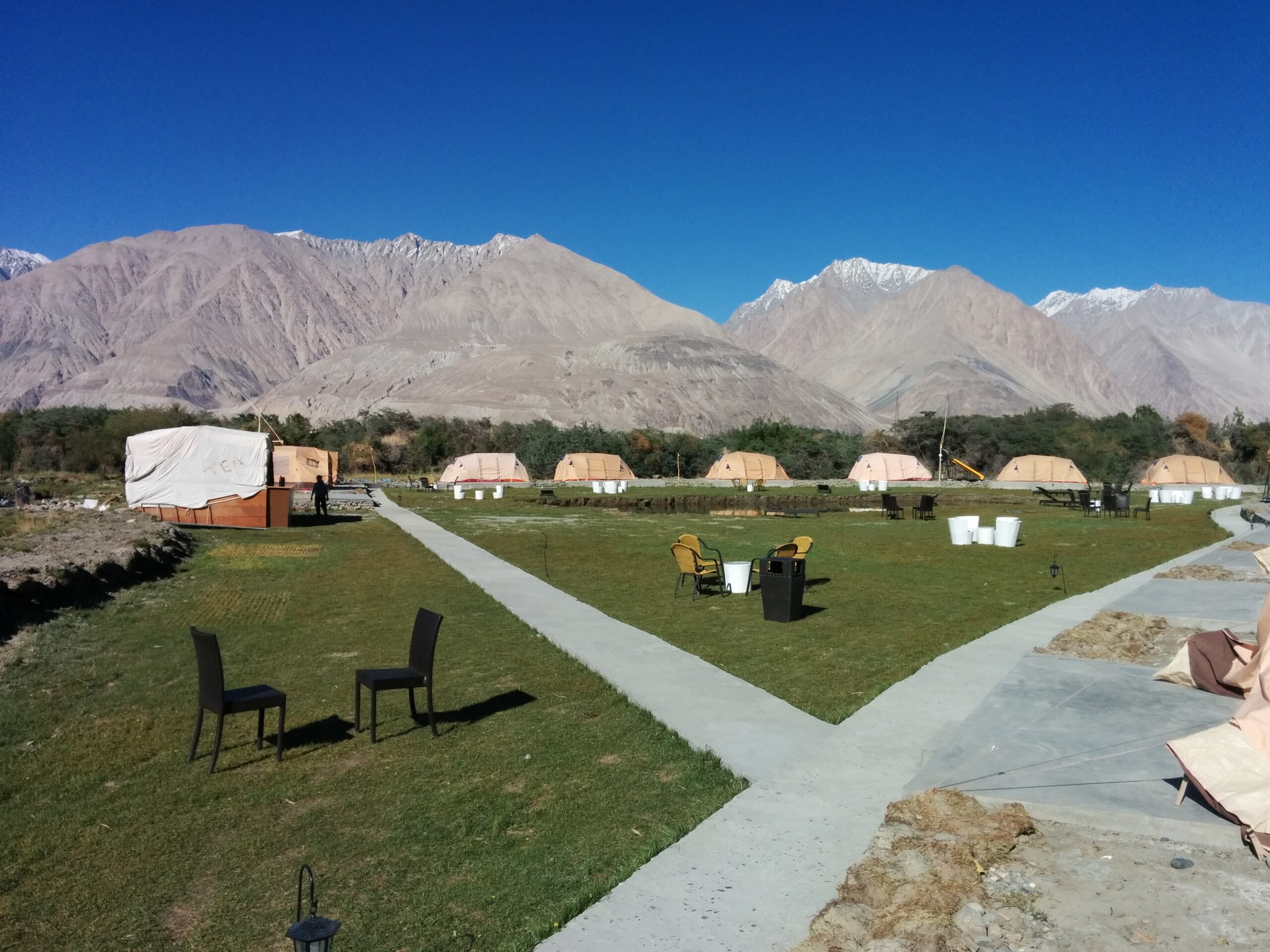
The Earth’s slow instruments
Ladakh is a palimpsest of geologic time. Where another landscape might present itself as a sequence of scenes, here the landscape is a silent memoir. Strata are pages, each fold a sentence about continental collisions, shifting sea beds, and epochs of compression. To walk along a pass is to move through paragraphs of planetary biography. I find that the readerly stance I adopted with breath extends naturally to this geology: patience yields comprehension. Fossilized seashells embedded in a cliff at four thousand meters are not curiosities but proof that time has an astonishing sense of mobility. The ground beneath your boots remembers a humidity that no living memory can recall.
There is a pedagogy in this antiquity. The mountains teach by the sheer scale of their indifference to human temporalities; they offer a steadiness that persuades the observer to expand their sense of history. This expansion is not a distraction from the present but a contextualization that deepens it. When you learn that a lake basin once held an ocean, the particular concerns of your itinerary—where to sleep, what path to choose—remain important but small. The landscape’s slow instruments recalibrate the traveler’s moral imagination: what we now consume quickly must be considered against the frame of what endures.
Light as a language of altitude
Light in Ladakh is a specific dialect: crystalline, sharp, and truthful. It does not flatter. It describes. At altitude the sun’s rays travel through less atmosphere and return with a clarity that exposes form and texture. Colors snap into place with an almost algorithmic precision; shadows delineate themselves like calculations of angle and intention. Paying attention to how light falls—how it changes the color of a rooftop, how it turns a glacial face into a study of planes—becomes an important exercise. It is through light as much as through breath that the altitude speaks. The day is an ongoing lecture about exposure and contrast, and the traveler’s eye, if taught, can learn to translate these signals into practical knowledge: where frost will form, how quickly snow will melt, which slope will hold early shade.
Yet light in Ladakh is not merely instrumental. It also carries emotion. At dawn, the valley breathes gold; by evening, warm ochres anchor the sense of time into the body. The quality of light participates in mood, excessing any single sensory register. As with the lungs, one learns to be modest in the face of such generosity: to stand, quietly, and take in the lesson offered. That the planet should provide such an unadorned curriculum is itself a form of abundance.
III. The Observatory of Silence
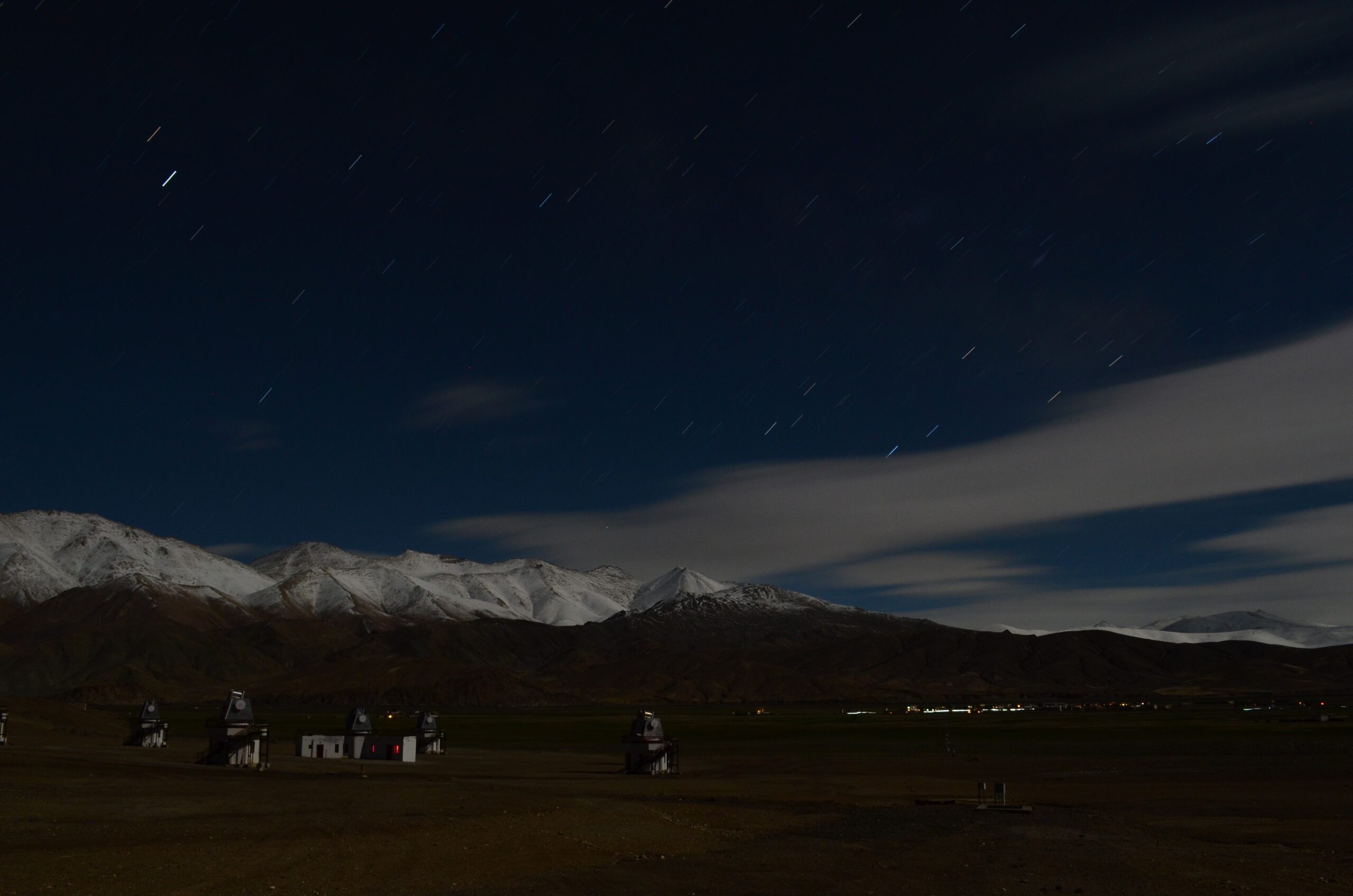
Where science meets stillness
In places like Hanle and other high-altitude observatories, instruments focus on signals that have traversed enormous distances. Telescopes and radio arrays listen for whispers of ancient light, for the faint tracings of solar and cosmic events. There is a remarkable fellowship between these scientific pursuits and the low, steady rhythms of monastic life nearby. Both are forms of attention: one records frequencies and wavelengths, the other listens to the cadence of prayer. Standing in the neutral space between them, I have often felt the same hush that attends a well-executed measurement—a focused silence that respects both question and answer.
Science in such settings is less triumphal than it looks in textbooks; it is humble. Instruments are tuned carefully, observations recorded with a patience that is almost devotional. Simultaneously, the physical stillness of the place—a stillness achieved by altitude as much as by intention—renders the scientific work palpable. Data is not merely numbers; it becomes a narrative thread in the local ecology. When a researcher tells me about the solar wind’s shifting pattern or how atmospheric clarity has varied over years, the anecdote becomes a local history. It is science folded into everyday conversation, and in that folding the categories of knowledge—religious, poetic, empirical—blur into a single practice of sustained attention.
Night as the planet’s slow exhalation
Night in Ladakh is not simply absence of light but the activation of a different scale of knowing. With negligible light pollution and crystalline air, the night sky becomes legible in extraordinary detail. Standing under that dome, you feel the planet’s capacity for memory: stars draw familiar paths; satellites trace their deliberate arcs; the Milky Way lays down a luminous seam. Observing the heavens becomes less about spectacle and more about slow comprehension. Cold itself participates in the lesson; as the temperature drops, the air tightens like a drum, and the way sound travels changes. The silence is not empty; it is full of measurement—the crispness of a distant dog’s bark, the way footsteps compress the frosted sand, the frost’s slow expansion over metal.
In that cold, the traveler becomes reciprocally visible to the sky’s history. Our breath puffs out for a moment, a transient cloud, and then dissolves—the briefest of confessions. The act of watching is a kind of witness to long processes. The night teaches that being attentive over time is a form of solidarity with scales far larger than ourselves. The instruments—both human and mechanical—are humbled into the same posture: they listen.
IV. Humans as Temporary Instruments
The measured heart
It is both a literal and a poetic truth that the heart is a meter. In Ladakh, where the body negotiates oxygen with each intake, the heart’s cadence is an honest account of presence. I have found myself timing my own steps to its rhythm, letting the beat decide the pace rather than an internal schedule or map. There is something intimate about allowing bodily metrics to become arbiters of movement; it fosters a respect for limits that feels less like defeat and more like auditioning for a different way of being. In shared spaces—tea houses, high passes, quiet intervals between villages—the exchange of anecdotal measurements is common: “I slept well,” someone will say, and the phrase carries the weight of acclimatization, weather, and food. These mini-reports are social instruments that calibrate community knowledge.
Being instrumented does not mean reduced. On the contrary, it can expand empathy: when you notice someone’s breath, you are invited into a slow attentiveness that cultivates care. Simple acts—offering a thermos of warm tea, accompanying a weary traveler to a shaded ledge—become significant reparative gestures. In such moments, we are instruments of comfort to each other, translating the planet’s demands into kindness.
Becoming the recorder
Travel writing often privileges picturesque description, but the discipline of writing as recording is different: it is an insistence on fidelity. In Ladakh I began to keep a different kind of journal—less lyric, more archival. I noted angles of slope, the precise hue of a lake at midday, the way a particular breeze smelled of juniper and dust. These records were not for exhibition but for memory’s calibration. The act of writing itself became a form of measurement: a way to witness and preserve the subtle transformations that occur when land and body conspire. Over time, the notebook accumulated a composite record—a mosaic of weather, appetite, stride. To read it later is to rehearse the sequence of attention: how we were cautious, how we adjusted, how we learned to be smaller in order to be more present.
This practice—becoming a recorder—has ethical implications. If travel is at risk of being extractive, recording can be a corrective: it requires time, restraint, and the humility to note rather than announce. The recorder is committed to fidelity; she resists the temptation to reduce a place to an emblem. In this resistance, one discovers a respectful mode of presence.
V. The Ethics of Thinness
Fragility as wisdom
Fragility in Ladakh is not weakness; it is a form of local wisdom adapted to scarcity. Plants hug the ground, shrubs conserve moisture, people cultivate practices of careful water use. The visible austerity of the environment fosters cultural practices that prize conservation and measured consumption. As visitors, we can either ignore these systems or learn from them. The ethical traveler listens and adapts: uses local sources, prefers homestays that invest in community, and minimizes waste. The land does not demand austerity for its own pleasure but because survival here depends on it. To treat fragility as wisdom is to reframe scarcity as a teacher, to let the landscape instruct the visitor in modesty and reciprocity.
Adopting such humility transforms the aesthetic pleasure of travel into a political choice. Choosing a local guesthouse over a distant luxury camp, declining single-use plastics, or asking how water is sourced and used are small acts that articulate a larger respect. In the end, the most meaningful forms of travel in fragile places are those that do not leave a measurable mark.
Travel as calibration, not escape
Many people journey to places like Ladakh to escape. But escape is a poor aim here. The altitude returns you to scale. It reframes ambitions and invites a different intention: calibration. Rather than outrunning responsibilities, the traveler learns to align them with the environment. This alignment is practical—know where the water is conserved, follow paths that prevent erosion—and existential—learn to measure what matters. If the purpose of travel is transformation, then Ladakh offers a transformation that is not theatrical but structural: it reshapes habits rather than just mood. To go there and remain unchanged is to have missed the point.
Calibration asks for humility and curiosity. It requires recognizing the difference between novelty and necessity, between wonder and consumption. The traveler who learns this becomes a better companion to the land and its people, someone who returns home with altered practices rather than souvenirs.
FAQ — Understanding the Journey
Q1. Is it safe to travel in Ladakh’s thin air?
Yes, with preparation. Allow at least two full days for acclimatization, hydrate regularly, avoid heavy exertion on arrival, and consult local guides if you have respiratory or cardiac conditions.
Q2. What practical steps help with acclimatization?
Ascend slowly, rest frequently, maintain hydration and modest caloric intake, sleep lower than your daytime altitude when possible, and use basic tools such as a pulse oximeter to monitor oxygen saturation trends.
Q3. How can I travel responsibly to minimize impact?
Choose local homestays and community-based services, minimize single-use plastics, respect local water use customs, stay on established tracks, and learn local customs to avoid inadvertent disruption.
Q4. What should I pack for a high-altitude trip?
Layered clothing, sun protection including sunglasses and high-SPF sunscreen, a refillable water bottle, a basic first-aid kit, a warm hat and gloves, sturdy footwear, and a small pulse oximeter if you prefer objective monitoring.
Q5. How does Ladakh change a traveler?
It recalibrates attention and pace. Travelers often return with a quieter gait, a stronger sense of scale, and a practical humility about consumption and speed. The experience tends to shift daily habits toward conservation and patience.
Conclusion — What the Earth Writes First
Ladakh teaches by subtraction. Remove the thickness of ordinary air and the clutter of habitual speed, and you reveal the skeletal structure of what matters: breath, light, patience, and respect. The journey through thin air is not heroic; it is educational. It asks for attentiveness and returns clarity. The Earth writes the lesson first; we are instruments asked simply to read. If the essential gift of travel is to change how one lives afterwards, then high-altitude journeys offer a particularly economical form of transformation: compact, unadorned, and durable.
Closing Note
Travel high to listen, not to conquer. Let the thinness teach you a modest way of moving: slower, more attentive, less extractive. The landscape will repay you with a clarity that becomes a quiet companion long after you descend. Accept the measurement the planet offers, and you will return not with trophies but with recalibrated habits and a steadier heart.
Narrative column for Life on the Planet Ladakh. Elena explores the silence, culture, and resilience of Himalayan life through attentive travel writing.

